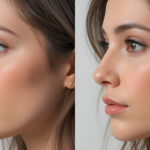
Understanding your body can feel like a puzzle, but there’s an empowering way to assess one common concern—cellulite. Whether you’re curious about what it means or how it affects you, learning to calculate your cellulite score offers valuable insights into your body’s health. Let’s dive into this approachable and practical guide that simplifies the process.
What Is Cellulite?
Cellulite is the dimpled or uneven appearance on the skin, often found on areas like the thighs, hips, and abdomen. It’s a natural occurrence caused by fat pushing against connective tissue. Think of it like a mattress where the springs cause tiny bumps.
Why Do We Have Cellulite?
Cellulite occurs due to a mix of factors, including genetics, hormones, lifestyle, and even skin structure. It’s not exclusive to any specific body type or size. Everyone’s body stores fat differently, which is why some people notice it more than others.
The Purpose of a Cellulite Score
Why calculate your cellulite score? It’s a tool to understand where you stand and identify areas you might want to address. A score helps you feel more in control, offering a roadmap for improvements tailored to your unique needs.
How to Calculate Your Cellulite Score
Calculating your cellulite score can be as simple as taking a quiz. These quizzes assess factors like skin texture, body type, and lifestyle. By answering a few questions, you’ll get a personalized score that highlights where you’re doing well and where you can improve.
Understanding the Quiz Methodology
Cellulite quizzes are structured to evaluate the appearance and feel of your skin, body composition, and habits. For example, questions might explore whether your skin feels firm or soft, how much water you drink daily, or how often you exercise. These metrics contribute to your overall score.
Factors That Influence Your Score
Your cellulite score isn’t fixed; it fluctuates based on several factors:
- ⦿ Hydration Levels: Dehydrated skin can appear less smooth.
- ⦿ Dietary Habits: Poor nutrition may exacerbate cellulite.
- ⦿ Exercise Routine: Staying active helps improve circulation and tone muscles.
- ⦿ Genetics: Your DNA plays a role in skin elasticity and fat distribution.
Decoding Your Results: What Does It Mean?
Your score might fall into one of three categories:
- ⦿ Low Cellulite Visibility: Minimal dimpling, excellent skin health.
- ⦿ Moderate Visibility: Noticeable but manageable dimples, a few adjustments may help.
- ⦿ High Visibility: Prominent cellulite, requiring targeted lifestyle changes or professional advice.
Remember, a higher score isn’t a verdict—it’s a starting point for growth!
Tips to Improve Your Cellulite Score
Small changes can make a big difference:
- ⦿ Stay Hydrated: Water plumps up skin cells, making them appear smoother.
- ⦿ Incorporate Strength Training: Building muscle tightens the skin.
- ⦿ Dry Brushing: This technique promotes lymphatic drainage and smooths the skin.
The Role of Nutrition in Reducing Cellulite
Eating whole, nutrient-dense foods is crucial. Include:
- ⦿ Antioxidant-rich fruits like berries to combat inflammation.
- ⦿ Healthy fats such as avocado and nuts to improve skin elasticity.
- ⦿ Protein to support muscle repair and skin health.
Exercises to Target Cellulite
Focus on activities that tone muscles and boost circulation. For example:
- ⦿ Squats and Lunges: Strengthen thighs and glutes.
- ⦿ High-Intensity Interval Training (HIIT): Burns fat effectively.
- ⦿ Yoga: Enhances flexibility and reduces stress, which can impact cellulite.
Embracing Self-Acceptance
While improving your cellulite score is empowering, it’s equally important to love your body as it is. Cellulite doesn’t define your worth. Think of it as a natural part of being human, not a flaw to fix.
Common Myths About Cellulite
Let’s bust a few myths:
- ⦿ Myth 1: Only overweight people get cellulite.
Fact: Even athletes have cellulite. - ⦿ Myth 2: Creams can eliminate cellulite.
Fact: Topical treatments might reduce its appearance, but they don’t cure it. - ⦿ Myth 3: You can remove cellulite entirely.
Fact: You can manage it, but cellulite is a natural part of the body.
Lifestyle Changes That Help
Here are a few habits to incorporate:
- ⦿ Daily Movement: Even a 30-minute walk can improve circulation.
- ⦿ Consistent Sleep: Rest repairs skin cells and reduce stress.
- ⦿ Stress Management: Elevated cortisol levels can worsen cellulite.
How Often Should You Recalculate?
Revisit your cellulite score every three to six months. This frequency allows you to track progress and make necessary adjustments without becoming obsessive.
When to Seek Professional Help
If cellulite causes significant concern or affects your confidence, consult a dermatologist or specialist. They can offer advanced treatments like laser therapy or subcision to minimize its appearance.
Key Takeaways:
- ⦿ Cellulite is a natural part of the body and affects most people.
- ⦿ Your cellulite score helps you understand and manage its appearance.
- ⦿ Lifestyle changes can improve your skin’s health and texture.
- ⦿ Reassessing your score every few months ensures you stay on track.
- ⦿ Embracing your body is just as important as any improvement.
Learning to calculate your cellulite score is a step toward understanding and embracing your body. With the right tools, mindset, and lifestyle changes, you can improve both your physical health and self-confidence. Remember, your cellulite doesn’t define you; your commitment to self-care does.
Is cellulite normal?
Yes, cellulite is entirely normal and affects up to 90% of people, regardless of weight or fitness level.
Can I improve my cellulite score without professional treatments?
Absolutely. Lifestyle changes like better hydration, a balanced diet, and regular exercise can significantly improve your score.
Are cellulite quizzes accurate?
While quizzes provide a general idea, they aren’t a substitute for medical advice or professional assessments.





